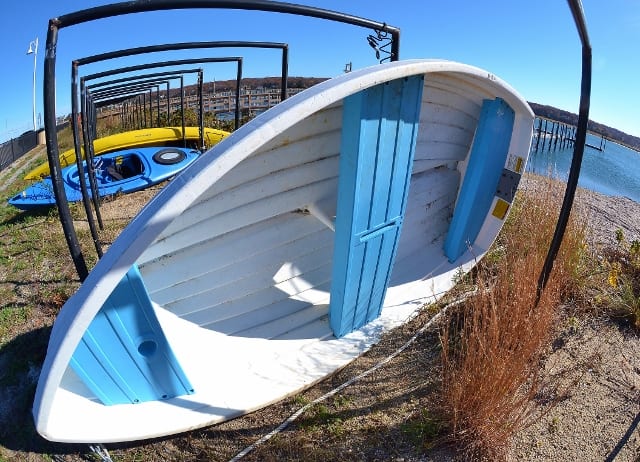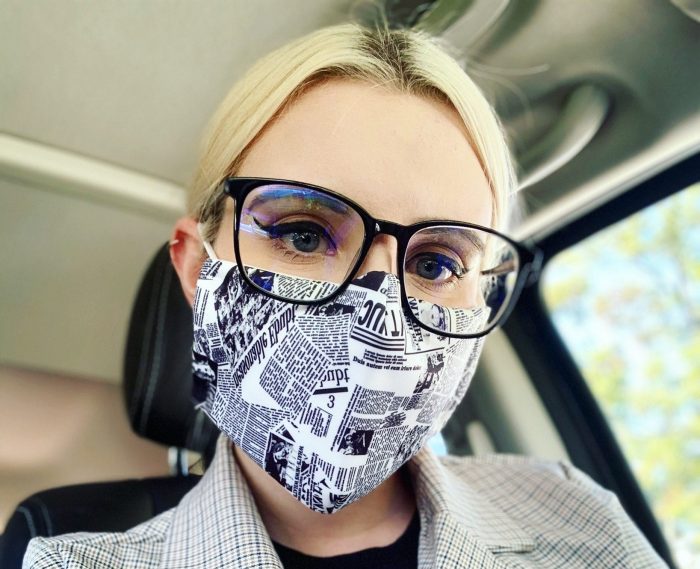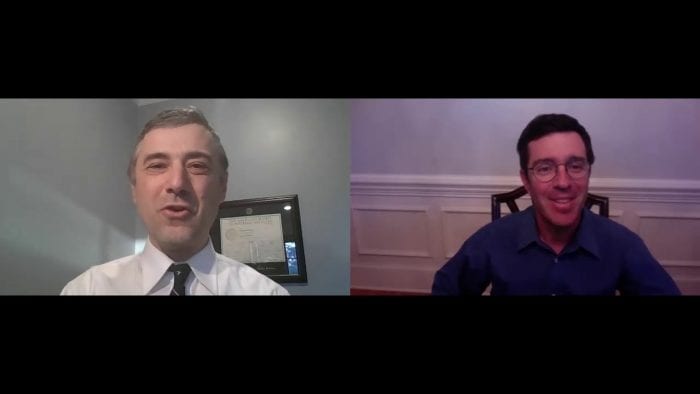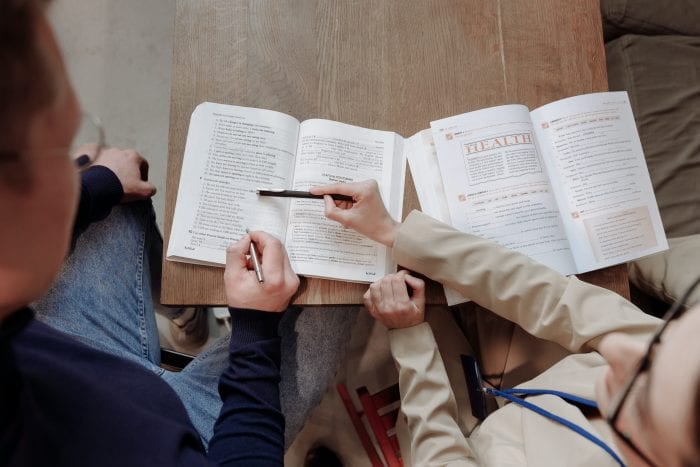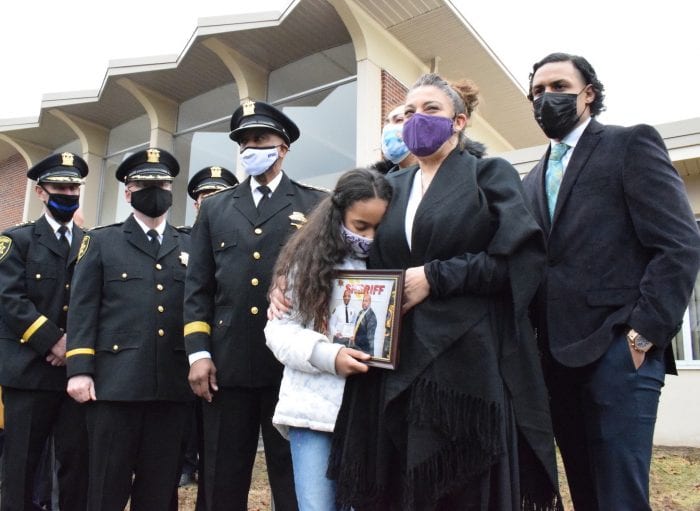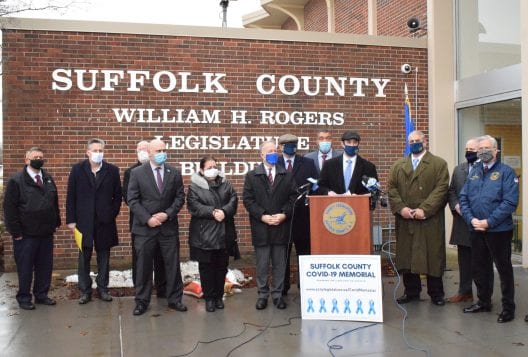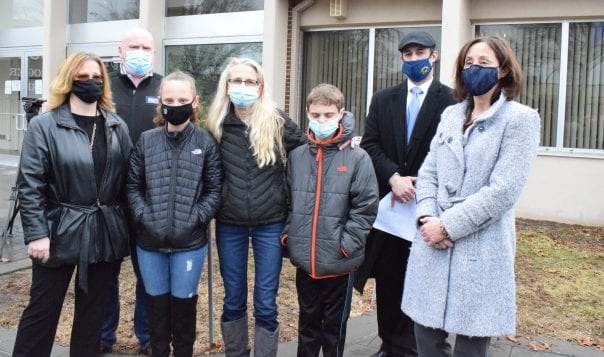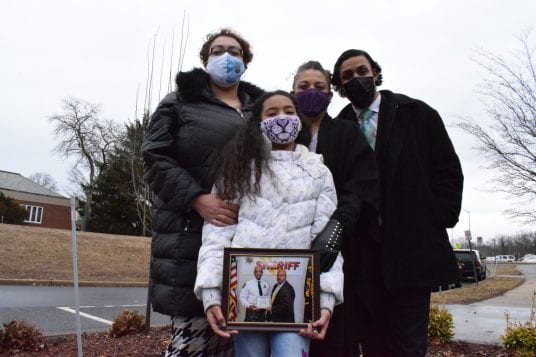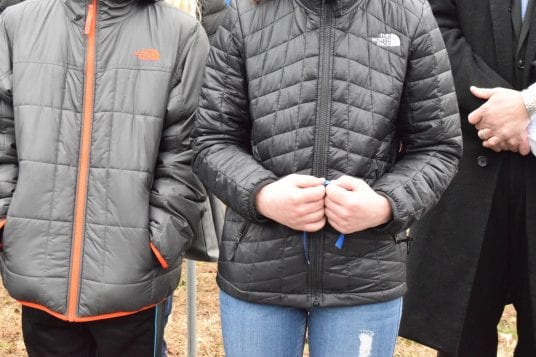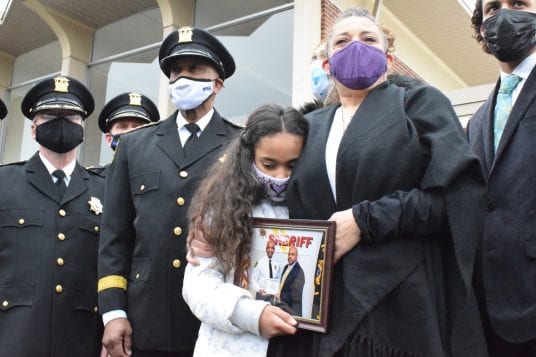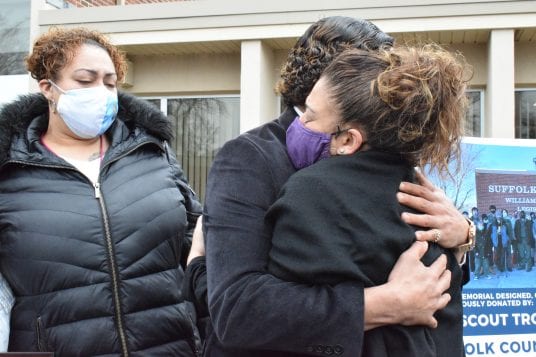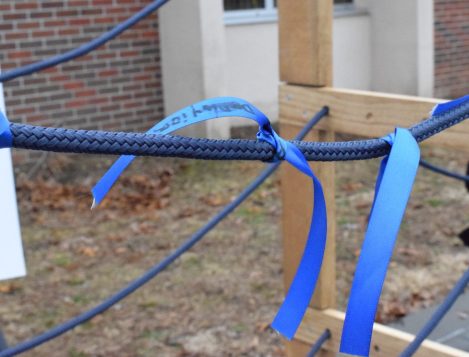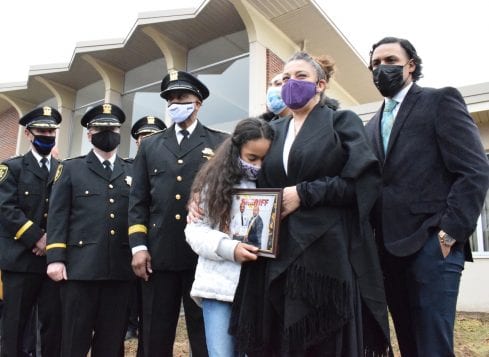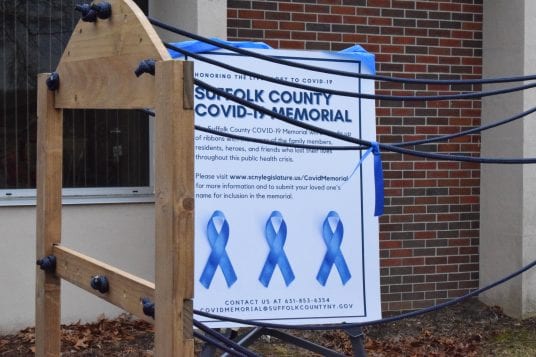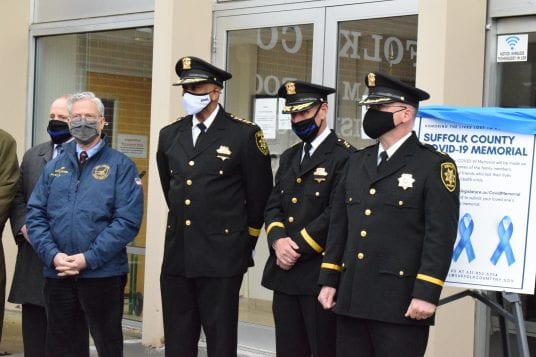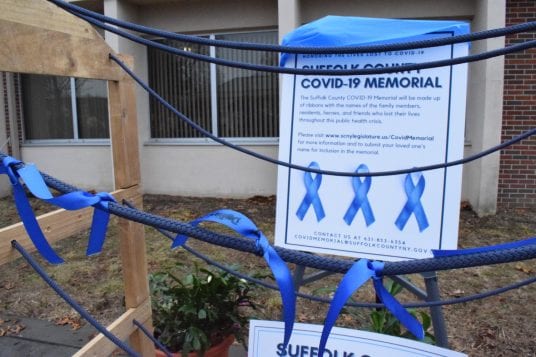 Through the month of March, Comsewogue Public Library in Port Jefferson Station presents a virtual exhibit, A View Through the Lens, by local photographer Gerard Romano. The exhibit showcases over 20 images of local scenes, flora and fauna, many of them featured in Times Beacon Record News Media’s Photo of the Week series. Check them out at www.cplib.org/exhibits-gallery/
Through the month of March, Comsewogue Public Library in Port Jefferson Station presents a virtual exhibit, A View Through the Lens, by local photographer Gerard Romano. The exhibit showcases over 20 images of local scenes, flora and fauna, many of them featured in Times Beacon Record News Media’s Photo of the Week series. Check them out at www.cplib.org/exhibits-gallery/
Hometown History: The Schooner — Port Jefferson’s distinctive waterfront restaurant
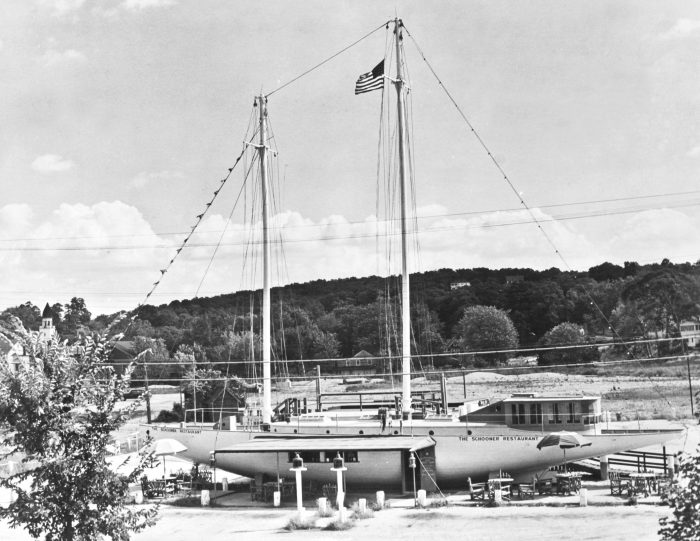
By Kenneth Brady
The Schooner, once advertised as Long Island’s most novel restaurant, was a waterfront landmark in Port Jefferson from 1946 through 1968.
Located on the south side of West Broadway (Route 25A), the eatery was the brainchild of brothers Charles and Elmer Mapp who had found the schooner yacht Ilikamo languishing in a Riverhead, New York, boatyard.
Taken with the Ilikamo’s graceful lines, the Mapps purchased the 44-ton ship, which they had towed to the west side of Port Jefferson Harbor and brought ashore for remodeling.
Transformed into a distinctive restaurant, the Ilikamo was then moved to a site on West Broadway and placed on a concrete foundation.
Sitting on land, her days on the seas over, the Ilikamo had reached her final destination, but surprisingly the ship’s last voyage was not her first to Port Jefferson.
Built in 1899 at Rice Brothers in East Boothbay, Maine, the Ilikamo was formerly the yawl Regina. In 1901, the 61-foot Regina was converted into a schooner yacht at Port Jefferson’s Bayles Shipyard, just one of the pleasure craft’s many ties with the village.
Later renamed Sita and ultimately Ilikamo, the luxurious schooner yacht regularly visited Port Jefferson during the early twentieth century, often returning to Bayles Shipyard where she was hauled out for repairs and laid up for the winter.
Over the years, sailing under her different names, the ship cruised along the east coast of North America, never straying too far from Long Island’s waters.
By summer 1940, the Ilikamo was under the command of William J. Marshall of Greenport, anchored in Southold Bay and being used as a training ship for Sea Scouts, the maritime branch of the Boy Scouts.
Marshall enlisted in the Royal Canadian Naval Volunteer Reserve (RCNVR) before America’s entry into World War II and died of natural causes in 1944 while serving as a lieutenant. He was the Ilikamo’s last documented owner before the Mapps brought the ship to Port Jefferson.
Sensitive to the yacht’s rich and varied history, the Mapps were careful to preserve many of the craft’s original features while preparing the ship for its new life as a landlocked restaurant. With the yacht’s character intact, the Schooner opened on Oct. 26, 1946.
The entrance to the dining room, as well as a service counter for takeout, were located on the port side of the restaurant. The menu featured standard fare with the emphasis on short-order selections with nautical names, such as “Sea-Pups (small meatballs).”
Adding to its curb appeal, the sides of the Schooner were painted in gleaming white. Two masts towered over the restaurant; their “sails” outlined at night by strings of electric lights that could be seen by ships passing in Long Island Sound.
In 1949, the Mapps sold the Schooner to Rose Ceperano of Poquott, who over time made several changes at the eatery. Among the improvements, she expanded the menu, enlarged the kitchen, added a covered patio for outdoor dining and constructed small outbuildings on the grounds. Ceperano also closed the restaurant during the winter months, reopening in the spring.
Although she initially ran the Schooner as a family business, Ceperano subsequently leased the establishment. Called “Tom’s Schooner,” the eatery broadened its menu to include Italian cuisine.
Wer-Kay Realty Corporation purchased the Schooner from Ceperano in January 1968. After the eatery was razed that April, the New Schooner Restaurant was built on the cleared land. The site is now home to SāGhar Indian Fusion Restaurant.
Kenneth Brady has served as the Port Jefferson Village Historian and president of the Port Jefferson Conservancy, as well as on the boards of the Suffolk County Historical Society, Greater Port Jefferson Arts Council and Port Jefferson Historical Society. He is a longtime resident of Port Jefferson.
Editorial: Women in journalism
It’s pretty funny. Journalism was always known as a male-dominated field.
Back in the day, women were mostly secretaries in the field — a select few would end up publishing their own works like the famous Nellie Bly.
But even so, thanks to the brave and loud people who fought for women’s rights all those years ago, we’re allowed to do what we do.
In celebration of Women’s History Month this March, we thank them, from the bottom of our hearts.
Now it’s 2021 and a lot has changed since Bly took a trip around the world in 72 days and uncovered the horrors of mental institutions in the late 1880s.
TBR News Media currently staffs primarily women — its three editors are all female. We’ve had men work here before, but it just happened to work out that the majority of employees are now female.
Although the world has given our gender more rights than before, it’s still tough out there for women in journalism — between community to national levels, broadcast, radio, print and the web.
Our colleagues have been harassed on the street, cat called, grabbed. Some of us have been victim blamed or spoken to in a condescending way. Some of us in journalism don’t earn as much as our male counterparts — even on Long Island (yes, equal pay still does not exist).
But yet, women are still out there talking to you, telling your stories, being as empathetic as we can be when interviewing, photographing, taking videos and writing an article.
We have a lot to be thankful for, but there still needs to be change.
We need to be paid properly for what we do. We need to be thanked for the work we do. We need respect — and not to be grabbed or harassed while we do our jobs. This applies not only to us but all the women out there who are doing their best to feed their families, achieve their goals and to make their mark on the world.
Family member reflects on funerals, personal loss amid pandemic
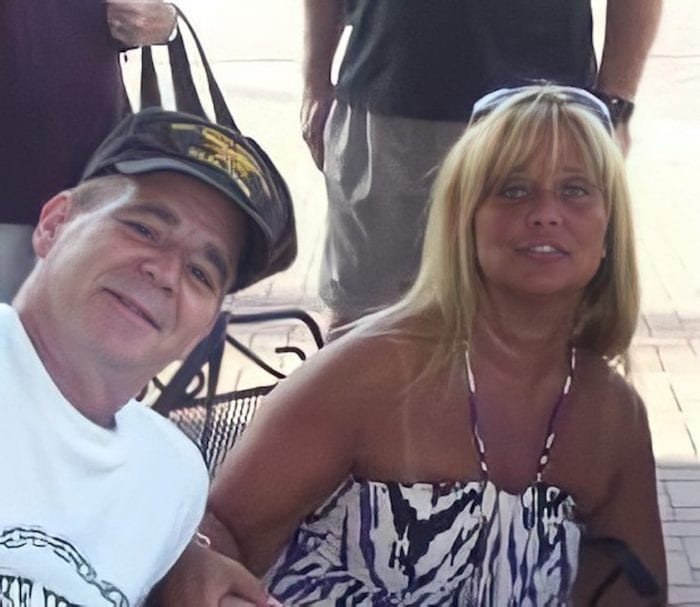
In September, Richard Spence, 64, of Selden, died of a heart attack.
Stunned by the loss, the extended family confronted the difficulty of planning a funeral during the COVID-19 pandemic.
“We felt we had to be strict. My mother is 91, so we were diligent in who was coming and who was not able to come.”
— Carole Ganzenmuller
Carole Ganzenmuller, Spence’s sister, knows firsthand the suffering and difficulty the pandemic has created for mourning families. Ganzenmuller works as a funeral director’s assistant at East Setauket-based Bryant Funeral Home, where she and the staffs at so many other funeral homes on Long Island and around the country grappled with restrictions on the kinds of personal support people could normally provide after the loss of a loved one.
“We couldn’t do the normal funeral,” Ganzenmuller said. “We felt we had to be strict. My mother is 91, so we were diligent in who was coming and who was not able to come.”
Indeed, she said many of the extended relatives from out of state couldn’t attend the funeral for Spence, who served in active duty for the Navy for four years and as a reserve for two years. He was buried at Calverton National Cemetery.
While the family did have visitation and used Zoom, Ganzenmuller said they didn’t “go through the normal process.”
She said her children, who are in California and were on lockdown, knew they couldn’t attend.
“We didn’t want that many people around my mom,” Ganzenmuller said.
Telling people not to come was a “very hard thing to do” as it cuts the grieving process and the goodbyes become more complicated, she added.
The grandchildren couldn’t embrace their grandmother, which would have provided the customary comfort
and support.
Ganzenmuller’s family has had several members play active roles in serving the country through the armed forces. Her late brother William, who died at the age of 43, served in the Air Force, while her oldest brother Gary is a Marine veteran who served in Vietnam. Her late father Robert was in the Merchant Marine.
“We hang an American flag with great pride,” she said.
Sad as it was for Ganzenmuller and her family to lose Spence this fall, she recognized that they had more opportunities to grieve her brother than people who lost loved ones in the spring of 2020, during the earlier part of the pandemic.
In some cases, Ganzenmuller recalled how she went to a cemetery on her own, bringing a casket without a family along.
“I was going to Calverton where the families could not attend the funerals,” she said. She said the “Hail Mary” prayer on behalf of the families when she brought the deceased to the cemetery.
The increasing number of deceased people Ganzenmuller bought to the cemetery or the crematorium made her feel as if she were “in a war zone.”
“I felt a little blessed that my family was allowed to have what we had.”
— Carole Ganzenmuller
Ganzenmuller’s family had an honor guard for her brother, and the flag was presented to her mother.
“It’s very special,” she said. She has thought of all the people who couldn’t receive that honor. In fact, she said some religious officials didn’t feel comfortable entering the funeral home, so those services occurred outside.
“What was a normal ritual was no longer a normal ritual for people,” Ganzenmuller said.
The pandemic changed the way people could grieve and could say goodbye.
“I felt a little blessed that my family was allowed to have what we had,” she said. “I’m sure the healing process was tougher” for people during the early months of the pandemic, regardless of what caused a close friend or family member to die.
Through all the funerals, some of which continue for COVID-19, Ganzenmuller appreciated how the staff at Bryant Funeral Home and in the industry as a whole pulled together as a team.
“We’re saying to ourselves, ‘There’s hopefully light at the end of the tunnel when masks will come down and people can grieve in a normal way,’” she said. “They want to hug their family, they want to cry on them — and not give the elbows anymore.”
Theatre Three in Port Jeff to hold food drive on March 6
Theatre Three Food Drive
Theatre Three, 412 Main St., Port Jefferson will hold a Theatre Three Cares food and personal care items drive to benefit the Open Cupboard food pantry at Infant Jesus Church on Saturday, March 6 from 9 a.m. to 1 p.m.
Food items needed include Mac & cheese, canned pasta, pasta sauce, tuna, peanut butter, jelly, coffee, sugar, flour, mustard, mayonnaise, ketchup, cooking oil, oatmeal, pancake mix, pancake syrup, black beans, rice, boxed milk, juice, canned fruit, healthy snacks, fresh chicken and ground beef and hot dogs.
Personal care items needed include shampoo, conditioner, soap, baby shampoo, diapers, pull-ups, baby wipes, deoderant, feminine pads, toilet paper, razors, toothbrushes and toothpaste.
Donations will be collected in the back of the theater on the south side of the building. They are also accepting donations of grocery store gift cards and cash to purchase whatever else is needed. If you prefer, you can remain in your vehicle for a contact-free drop off. For more information, call Brian at 631-938-6464.
Huntington Hospital infectious disease expert discusses latest COVID news
Adrian Popp, chair of Infection Control at Huntington Hospital/ Northwell Health and associate professor of Medicine at Hofstra School of Medicine, spoke with TBR News Media newspapers to discuss vaccinations and COVID-19. Please find below an abridged and edited version of the discussion.
TBR: Why do some people have a stronger reaction to a second shot?
POPP: These two vaccines are very well tolerated. Yes, there are some side effects after getting the shots. Indeed, even in the trials, it has been shown that the second shot is sometimes more prone to have side effects. There is pain, tenderness at the site of the shot. Sometimes people can get fatigue, fever and even a chill. It is rare to have something more severe than that … From my experience, most people tolerate them well, including the second shot.
TBR: Should people try to take at least a day off, if they can, after the second shot?
POPP: That is not necessarily unreasonable. A lot of my colleagues did take the shot later in the afternoon and then go home and rest for the evening. If you can afford to have a day off the next day, that’s probably not unreasonable.
TBR: Does having the vaccine free people up to interact with others?
POPP: What we know from the Moderna and Pfizer trials is that the effectiveness of the vaccination is 95 percent to prevent symptomatic disease … Can a vaccinated person develop a light form [of the disease]? In theory, yes. There are not completely safe in [not] transmitting the disease to someone else.
TBR: Have the Black and brown communities, which have been somewhat resistant to taking the vaccine, been included in the clinical studies?
POPP: Those studies with Pfizer and Moderna included these populations. They are well represented in these studies. There’s no significant difference in the side effects in African Americans, or less efficacy in the Black and brown communities …. [The Black and brown communities] should feel comfortable that it’s as safe or as efficacious as it is in a Caucasian person.
TBR: Have people from the Huntington Hospital or Northwell community asked you about the safety of taking the vaccine?
POPP: I do have conversations like this every day with different members of Huntington Hospital [as well as] the community at large … I bring up one very recent study that will probably help in kind of showing a few things. I’m going to bring in Israel, a smaller country with a centralized health care system that has been very good in vaccinating people …. More than 50 percent of their population has received the COVID vaccination. Specifically, the senior population, 65 and above, has received the vaccine in percentages even higher … In a study in the New England Journal of Medicine of more than 600,000 people who received the vaccine, [they] compared the incidence of COVID without the vaccine. They found the protection is more than 90 percent … That tells us the vaccine is very effective.
TBR: What do you hear about the Johnson & Johnson vaccine?
POPP: The best thing about the [J&J] vaccine is that it’s only one shot and the second thing is that it can be stored at normal temperature compared to the other vaccinations [which require deep freezing] … That allows it to be distributed more easily … It will probably be a good vaccine as well.
TBR: After the shots, what is the immunity?
POPP: After the first shot, approximately a week or two weeks after the first shot, you develop quite a significant level of antibodies. There is a certain amount of protection. With the second shot, the level of antibodies shoots up probably 10 times higher than after the initial shot … Full immunity is one week after you receive the second shot.
TBR: Some reports suggest that people who have COVID and develop antibodies may only need one shot. Is that true?
POPP: There are infectious disease experts looking into this. We do know that after getting COVID, you do develop a certain level of antibodies … That varies widely from person to person … The jury is still out on this one. Truly, we have to look at it in a more scientific way. We’ll find out if this will be an option down the road. At this point, as the recommendation stands, you do have to get both shots, even if you had COVID disease before.
TBR: Do we know more about why one person gets very sick and another has only mild symptoms?
POPP: Up to 50 percent of people who get COVID are either asymptomatic or have really minor symptoms. There are risk factors for developing a serious disease. We know that obesity, hypertension, diabetes and specifically certain immunocompromised conditions are risk factors for more serious disease. I have seen older people in their 90s who do have a mild form of the disease, then I’ve seen somebody in his 40s who has very severe disease … There is no real good way of saying who will develop a more severe disease versus somebody else who will have a milder form.
TBR: What about the aftereffects of COVID?
POPP: I have seen quite a few cases of people who … develop quite severe symptoms. On the milder end, people have a loss of taste and smell. This can last for some time … From my experience, most people will recover from this. On the other hand, people with more severe illness, people who get hospitalized, I have to say that the virus can take a significant toll on that person. I have seen patients who have lost 20 to 40 pounds over a period of a month or a month and a half … Recovering from such a hit of being sick for such a prolonged period of time takes a toll on people. Some patients also develop some degree of cognitive impairment.
TBR: What keeps you up at night?
POPP: Even though [the infection rate] is coming down in New York, it is still not insignificant. It’s still an issue. Until we get … a significant number of our population vaccinated, we’re still going to be in trouble … The only way we can stop the whole thing is by vaccinating as many people as we can.
SBU scientist finds nitrogen filter also reduces possible carcinogen

Water, water everywhere and several scientists want to make sure there are plenty of drops to drink.
Christopher Gobler, director of the New York State Center for Clean Water Technology, and Arjun Venkatesan, the CCWT’s associate director for Drinking Water Initiatives, recently published two studies in which they highlighted how their efforts to reduce nitrogen also cut back on 1,4 dioxane, a likely carcinogen.
Gobler, who is also endowed chair of Coastal Ecology and Conservation at Stony Brook University’s School of Marine and Atmospheric Sciences, is leading a center whose mission is to solve the nitrogen overloading crisis in Long Island’s groundwater and surface water by developing alternative onsite septic systems.
Nitrogen, which comes from a host of sources including fertilizer, creates the kind of conditions that lead to algal blooms, which can and have closed beaches around Long Island. Nitrogen also harms seagrass meadows and can cause the collapse of shellfisheries like clams and scallops.
In the meantime, 1,4 dioxane, which is a potential health threat in Suffolk and Nassau counties, comes from household products ranging from shampoos to cleaning products and detergents. Manufacturing on Long Island in prior decades contributed to the increase in its prevalence in water sources.
Indeed, recent studies from the center showed “very high levels of 1,4 dioxane have been detected in our groundwater,” Venkatesan said in a recent press conference.
The chemical doesn’t easily degrade, conventional wastewater treatment doesn’t remote it, and household and personal care products contribute to its prevalence in the area.
A one-year study “confirmed this suspicion,” Venkatesan said. “The level of 1,4 dioxane in a septic effluent is, on average, 10 times higher than tap water levels.”
This finding is “important” and suggests that the use of these products can ultimately end up polluting groundwater, Venkatesan continued.
At the same time, the increasing population on Long Island has contributed to a rise in the concentration of nitrogen in groundwater, Gobler added during the press conference.
The center hoped to create a septic-enhancing system that met a 10, 20, 30 criteria.
They wanted to reduce the concentration of nitrogen to below 10 milligrams per liter, the cost to below $20,000 to install and the lifespan of the system to 30 years.
The center developed nitrogen removing biofilters, or NRBs.
In a second paper, the researchers showed that the NRBs removed 80 to 90 percent of nitrogen.
At the same time, the NRBs are removing nearly 60 percent of 1,4 dioxane, driving the concentration down to levels that are at, or below, the concentration in tap water, which is 1 part per billion.
This is the “first published study to demonstrate a significant removal of 1,4 dioxane,” Gobler said at the press conference. NRBs have advanced “to the piloting stage.”
The center anticipates that the NRBs could be available for widespread installation throughout Suffolk County by June 2022.
The center currently has 20 NRBs in the ground and will have over 25 by the end of the year. In 2022, anyone should be able to install them, Gobler said.
Residents interested in NRBs can contact the center, which is “working toward being prepared for widespread installation,” Gobler explained in an email.
Residents interested in learning what financial assistance they might receive for a septic improvement program can find information at the website www.reclaimourwater.info.
Gobler said the microbes in the NRBs do the work of removing nitrogen and 1,4 dioxane, which continually reside within the filters. He explained that they should continue to be functional for decades.
Adrienne Esposito, executive director of Citizens Campaign for the Environment, which has offices in five locations and is committed to an environmental agenda, was pleased with the research Gobler and Venkatesan presented.
She was “beyond thrilled with the science released today,” she said during the press conference. This research on the effectiveness of the NRBs “validates all of the work going on for the last four years.”
Esposito urged the state’s Department of Environmental Conservation to test wastewater from laundromats, car washes and other sources to determine the amount of 1,4 dioxane that enters into groundwater and surface water systems.
Esposito is “thankful for science-based work that allows us to attain clean water.”
D. None of the Above: Conversations about vaccinations, college and conferences
By Daniel Dunaief

In my daily conversations with a range of people over the last week, I have heard stories I thought I’d share, as a reflection of the reality of our lives.
The first involved a discussion with Joe about his vaccination. Joe had been trying to sign up for a COVID vaccination for weeks. He thought he’d landed a coveted vaccination appointment at Jones Beach. Driving out there for a 6 p.m. appointment, he drove in circles.
The site had the wrong address, he said. In addition, even the correct address, which had a phone on-site that wasn’t working, naturally, was closed that day because the winds were too high.
“Who would put tents up on Jones Beach?” Joe asked, his voice barely rising but his frustration evident from the time wasted trying to get a vaccination that would allow him to do a job that required interacting with the public. “If you want to build a tent, put it somewhere that’s not as windy. It wasn’t even snowing.”
Fortunately, Joe, who spent more time the next day sharing his experience with a vaccination operator, was able to schedule a make-up appointment much closer to home.
The next day, I spoke with Matthew, who is worrying about his son Jim, who is a sophomore in college. Jim, you see, has already received a COVID warning. A second warning or infraction could send his son home, which would, as Matthew put it, “not be good for anybody.”
As it turns out, Jim has a girlfriend, Sarah. Normally, that wouldn’t be such a cause for concern for his parents or for the university. Still, with his girlfriend living in a different penitentiary, I mean, dormitory, Jim is not allowed to visit with Sarah.
The problem is that Sarah, who is an excellent and committed student, not only works hard at school, but also inspires Jim to expend considerable additional academic effort.
If Jim stops seeing Sarah, which he may do to comply with school rules designed to protect the campus from spreading the dangerous virus, he will miss time with his close friend, while he will also likely not study as hard.
My friend Matthew advised Jim to be careful and comply with the rules, although I could tell that he felt his own return on the investment he spends for college will likely be higher if Jim spends more time with his studious friend.
Finally, I spoke with Paul, a friend who regularly attended conferences before COVID shut all those events down. Paul traveled at least four times a year to meetings all over the world, visiting interesting places but, more importantly, speaking with people in his field.
One day in 2019, Paul was sitting in one such conference and was taking notes. As the conference ended, he and the man sitting next to him, whom he’d never met, struck up a conversation. The man suggested a follow-up effort to the work that might help the industry. Realizing he had the ability to do exactly what the stranger suggested, Paul asked if the man would mind if he used the idea. The stranger was delighted and a friendship, and an idea, was born.
I asked Paul how much he missed conferences and if he planned to attend them when the world reopened.
He said he would not only jump at the chance, but might even attend conferences he wouldn’t have previously considered, just to benefit from such random and potentially beneficial interactions. His only hesitation is that he hasn’t gotten his vaccination yet. He wondered what I thought about driving out to Jones Beach.
Between You and Me: Choices, and possibly regrets, that define a life
By Leah S. Dunaief

“What are you doing for enrichment these days, now that you can’t see a Broadway play or go to the opera or comfortably travel to new countries?” asked a longtime friend the other day. “Do you feel like you are in a desert?”
I had to think about that for a moment. True, those events she mentioned that I so enjoy have been on hold throughout this unimaginable pandemic we are enduring, and I certainly miss them. While I have my work with the newspapers and digital media that keeps me happily occupied, the pleasure I take in the cultural side of my life has not disappeared. It’s just changed. I’ll tell you how and see if you agree.
Yes, I love to travel. But, you know, reading books and taking trips have much in common. A faithful subscriber, who writes to me often and sends me clippings that he finds interesting, sent me a column from The Wall Street Journal by Elizabeth Bernstein.
“Books expand our world, providing an escape and offering novelty, surprise and excitement, which boost dopamine,” she comments. “They broaden our perspective and help us empathize with others. And they can improve our social life, giving us something to connect over.” She could just as correctly be describing travel.
Bernstein goes on to quote Mitchell Kaplan, owner of independent book stores Books & Books and co-founder of the Miami Book Fair. “You disconnect from the chaos around you. You reconnect with yourself when you are reading.”
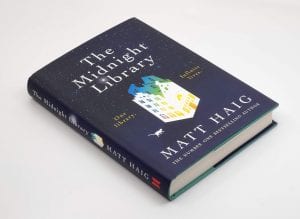
I certainly agree. At the moment, I am reading The Midnight Library by Matt Haig. In this New York Times bestseller, he takes up a subject that has at one time or another occurred to all of us: what if I had taken another road in my earlier life? It brings to mind the Robert Frost poem, “The Road Not Taken,” as it deals with the many choices the young heroine in the novel could have made differently.
And ultimately, the story reconnects us with ourselves, as travel does for me. What if I had gone south instead of north on my trip? What would I have experienced? Whom would I have met? That is not so different from: what if I had gone to a different college, taken a different major, married a different person, settled in a different place? Books, like travel, stimulate, entertain, and if they are good books with universal themes, speak to you personally.
Of course, you don’t get to eat the different native cuisine when you read that you do when you travel. Books and travel: analogous but not the same. Yes, books are a magic carpet that can transport you to any place in the universe, but I surely do miss the physicality of travel, of throwing a few articles of clothing and my toothbrush into a suitcase and hitting the road.
As to other enrichment in my life, I have become captivated by movies on streaming services like Netflix and Hulu. Well, some of those films offer cultural enrichment, some just good old entertainment. I fell in love with Outlander, the time-travel series I stayed up until all hours binge-watching, as I have previously mentioned. Since then there have been many that I would recommend, including some that were finalists for the Golden Globes awards that I was able to watch on my Smart TV.
Nomadland, which won for best motion picture, is about a slice of life in America that few of us see. The story follows an older widow who outfits her vehicle so that she can live in it and travels around the Southwest, working occasional spot jobs to sustain her along the way. She meets up with others doing the same, and they are mutually supportive even as they are fiercely independent. Her journey is one of self discovery, revealed through her choices, even at an advanced age.
Others I have enjoyed include The Dig, The Trial of the Chicago Seven, East Side Sushi, Penguin Bloom, Red Sea Diving Resort and the delightful series, Firefly Lane. I don’t feel like I am in a cultural desert, but I want it all back.
Suffolk officials mark the opening of COVID-19 memorial
Almost a year to the day of the first reported case of COVID-19 in Suffolk County, elected officials joined mourning families to remember the lives lost.
On Monday, March 1, Suffolk County Presiding Officer Rob Calarco (D-Patchogue) with his colleagues and officials unveiled a new county COVID-19 memorial in Hauppauge.
“Over this last year, I don’t think anybody at the beginning would have thought that we would have had so many trials and tribulations, so many challenges and so many losses,” Calarco said.
Since March 2020, there have been more than 500,000 deaths nationwide from the virus, and just over 3,000 in Suffolk County.
“That is a tremendous number of people,” Calarco added. “And it has left many of us mourning.”
The wooden structure, located outside the Legislature’s William H. Rogers Building at 725 Veterans Memorial Highway, was built and donated by Smithtown Boy Scout Troop 888, and will be on display throughout the month of March.
Families and loved ones are encouraged to write the names of those who have passed, tying the purple ribbons on the metal cords across the wooden planks. It’s a way, Calarco said, to memorialize them.
“Because especially for those who were lost early on, family members weren’t able to lean on each other,” he said. “They weren’t able to be with their loved ones in the hospital due to restrictions. They weren’t able to have the normal funeral and wake process for their friends and family. When we grieve, we need to have the community around us to support us.”
Deputy County Executive Jon Kaiman spoke on behalf of County Executive Steve Bellone (D) who was not in attendance.
“Three thousand people in this county lost their lives … that’s more than 3,000 families grieving,” he said. “We in Suffolk County stand with them. We grieve with them. We know that we’re in the process of getting through it, we’re getting through it together.”
The first group of families able to share names tearfully thanked the county for honoring their loved ones.
The family of Sgt. Keith Allison of Brentwood was the first to tie the ribbon. Allison, who spent 25 years in uniform with the Suffolk County Sheriff’s Office, died in December after a 17-day battle with the coronavirus.
“I’m humbled to be here and to accept this ribbon in his name,” said his wife Brenda. “I know that he’s looking down smiling.”
County Sheriff Errol Toulon Jr. (D) said of his former colleague that he was “not only just a friend of mine, but a person who was always smiling, always helpful and always energetic and passionate about his job.”
County Police Commissioner Geraldine Hart came to support the Van Zeyl family. Lt. Robert Van Zeyl, of Selden, passed away from the virus on Jan. 20 after a two-week battle. He was the first active county police officer to succumb to COVID-19.
“I think we all thought that we would be immune from this tragedy, and it really hit our family very hard, our police family,” Hart said. “Bob was out there every day. He didn’t stop. He didn’t back down during the most difficult of times in this pandemic. So, we were honored to have him in our family, and we will always be honored to have you with us. And we’ll never forget what he’s done for us.”
Van Zeyl’s ex-wife, Tina, joined their two children Hailey and Tyler in the emotional ribbon tying. Hailey had the honor of putting her dad’s name on the memorial.
“It felt like I was honoring my dad,” she said. “I know he’s proud of me.” Anyone who has lost someone to COVID-19 may submit their loved one’s name for inclusion in the memorial online at scnylegislature.us/covid-19-memorial. The website also provides the option to share a photo and a memory about the person.
After the county receives the submission, county staff will write the loved one’s name on a ribbon and affix it to the memorial.
Ribbons will also be made available to those who wish to write their loved one’s name and tie the ribbon themselves, at both the memorial in Hauppauge as well as a temporary structure on the East End in the lobby of the Evans K. Griffing Building at 300 Center Drive in Riverhead. Any ribbons tied in Riverhead will be incorporated into the memorial.
More information is available at the above website.


